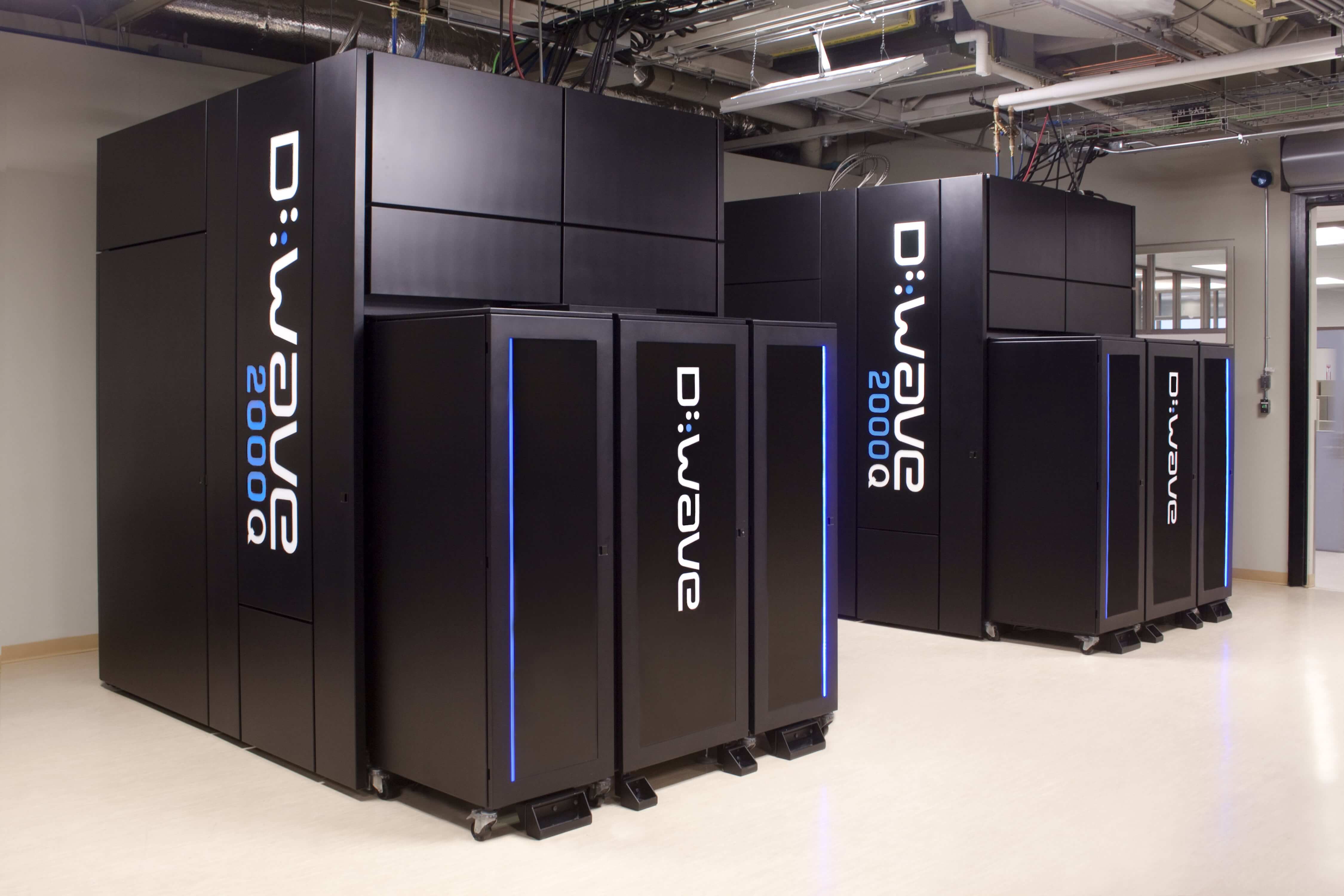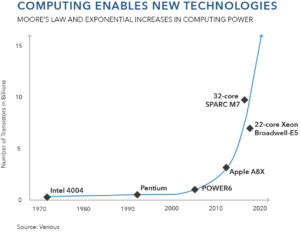A Strange and Counterintuitive World
Quantum computing is cool. In fact it is really, really cold. It takes computers that are cooled to temperatures colder than outer space to take advantage of the unique and mind bending features of quantum mechanics.
There are three important features of quantum mechanics that make using quantum computers so interesting and disruptive. Those are:
- Superposition: The ability of a quantum particle to represent two (or many more) pieces of information at the same time. In classic computing, transistors are used to represent “bits” (a one or a zero) at any one time. Bits provide the underlying structure of all classic computers. In a quantum computer, a bit (or more properly a qubit) can represent a one and a zero (or anything in between) at the same time. This means that much more information can be represented by a qubit.
- Entanglement: A very strange element of quantum mechanics is the idea that once two quantum particles are “entangled” they will stay entangled no matter how far they are separated. This means that if anything happens to one entangled particle, the same thing will happen to the other regardless of how far they are separated.
- Quantum Tunneling: Another strange property of quantum mechanics is the idea that quantum particles do not necessarily have to follow the constraints of a physical world. To put it simply, when a quantum particle encounters a hill, it does not necessarily have to climb over it; the quantum particle can just tunnel right through.
Bottom line, with quantum computing we are entering a new era of how we think about computing. This is similar to the early days of classic computing. The good news is that a lot of very smart people are working on this new technology. It will be interesting to see who emerges as the Alan Turing and John von Neumann of quantum computing.
Exploring the Quantum Computing Landscape
The first company to sell quantum computers is D-Wave, which has been working on the technology for several years. There are several different approaches to building and programming quantum computing and D-Wave is using a method known as “annealing”.
It basically works by using a matrix of Josephson Junctions. As explained by D-Wave U.S. President, Bo Ewald, a simple way of thinking about quantum computers is that connecting the matrix of Josephson junctions creates a topological map that depicts mountains and valleys. Then through the annealing process, energy is poured over the map like a cup of water. The D-Wave system instantly sees where the energy “pools” and this represents the valleys or lowest energy states.
A good example of the usefulness of this type of computing is known as the NP-Hard problem. This type of mathematical problem would normally require a “brute force” approach, testing each possible answer. A classic NP-Hard problem is the “traveling salesman” problem.
Given a number of cities, with different distances between them, the problem is to find the shortest route for a traveling salesman to visit each one. This is simple to calculate for a small number of cities, but quickly becomes impossible for larger numbers.
However, the D-Wave quantum computer can be programmed to create a “map” of the cities and their respective separation distances then, through the annealing process, visually find the answer instantly.
D-Wave is not the only quantum computer on the horizon, and some disagree that it even is quantum computing. However, as we learned in the ASCI program with the first teraFLOPS computer, the only way that to figure out how to use the system was to have one on the floor and let scientists and engineers start trying to use it. An important advantage of the D-Wave system is that it has computers on the floor at Lockheed, NASA/Google, and Los Alamos National Laboratory, and smart people are figuring out how to use them.
Images credit D-Wave.
Join the Catalyst Monitor
Join our community, where we push out regular insights to help maintain situational awareness on technological and socioeconomic trends.




